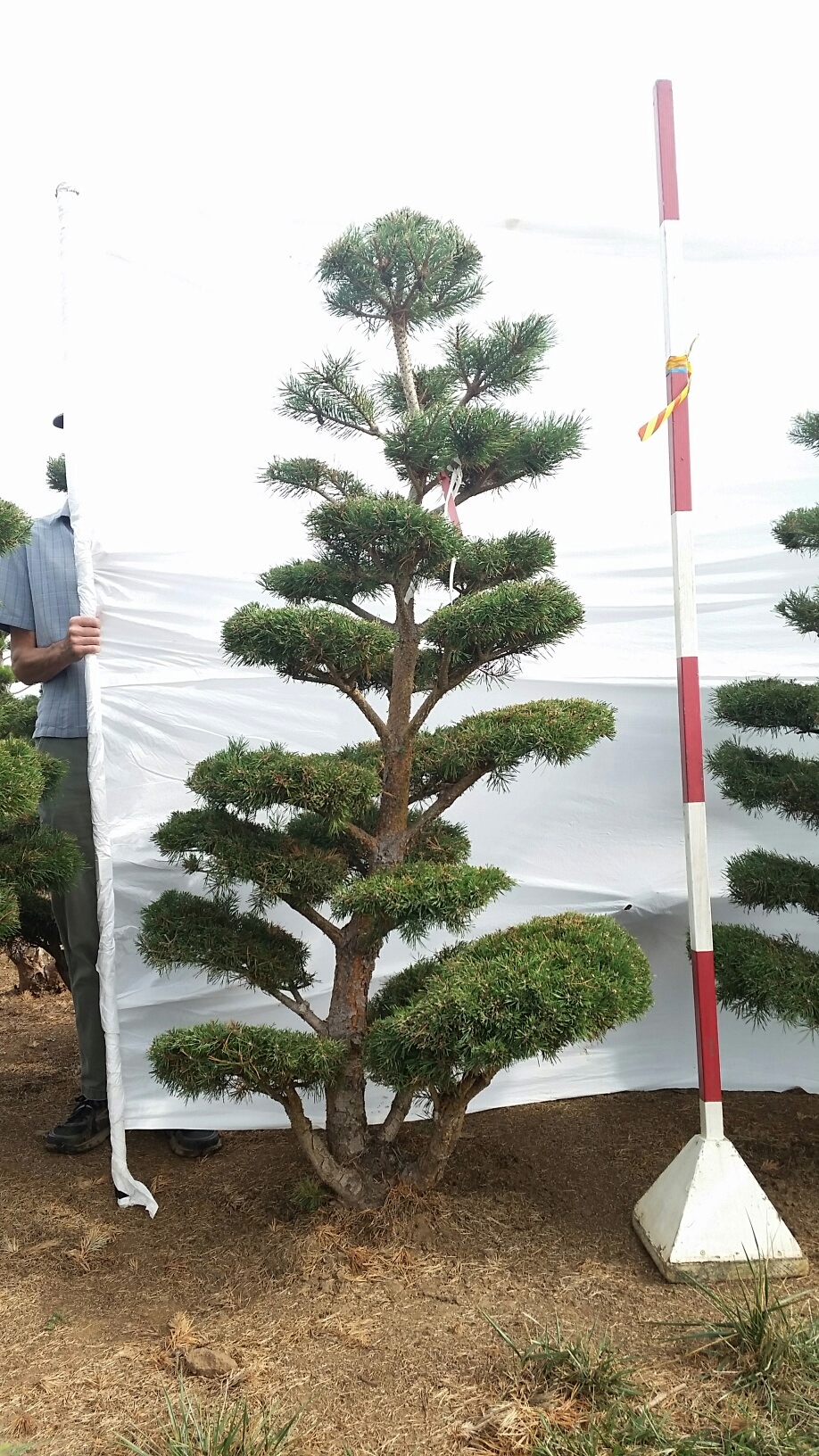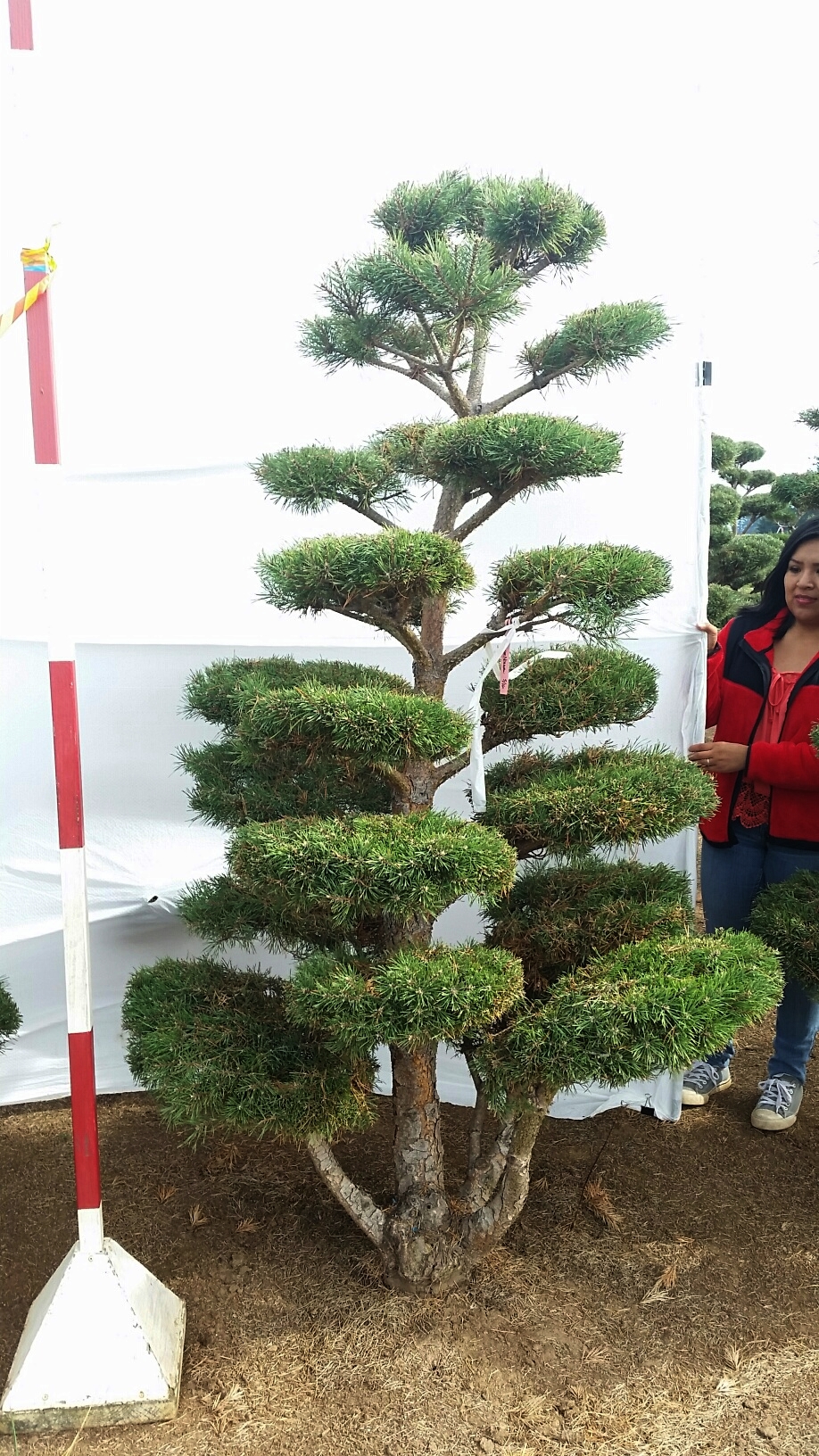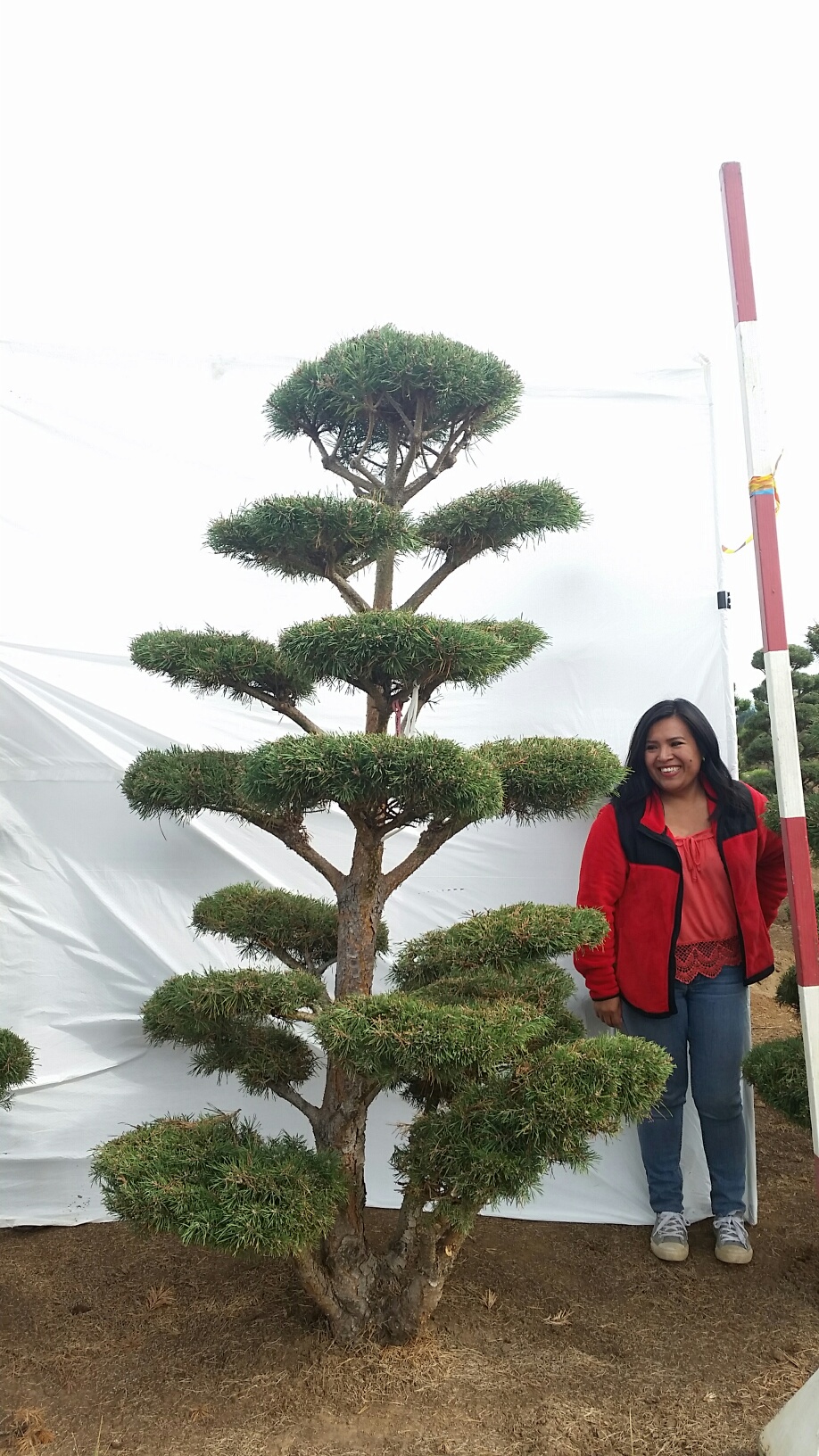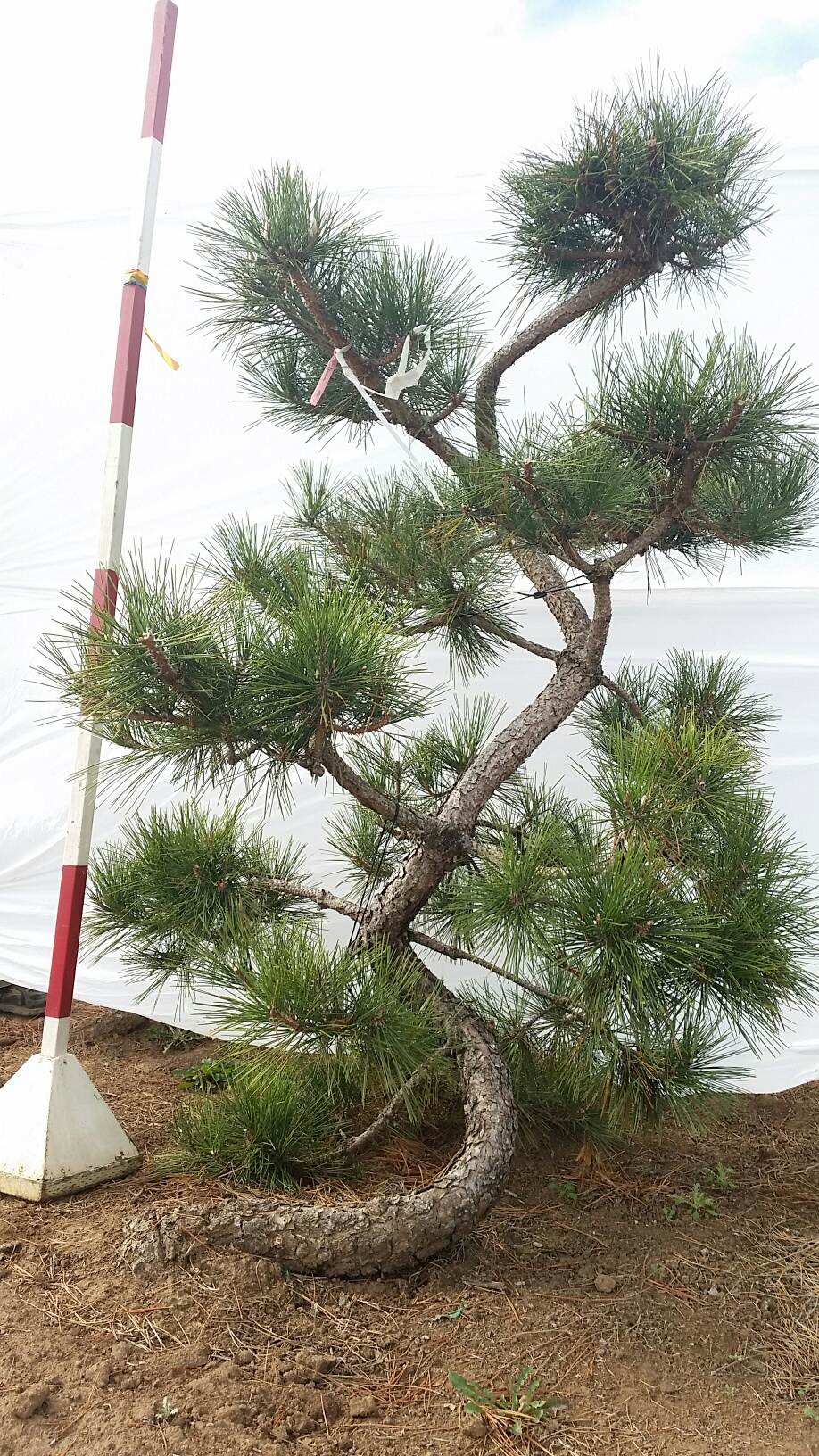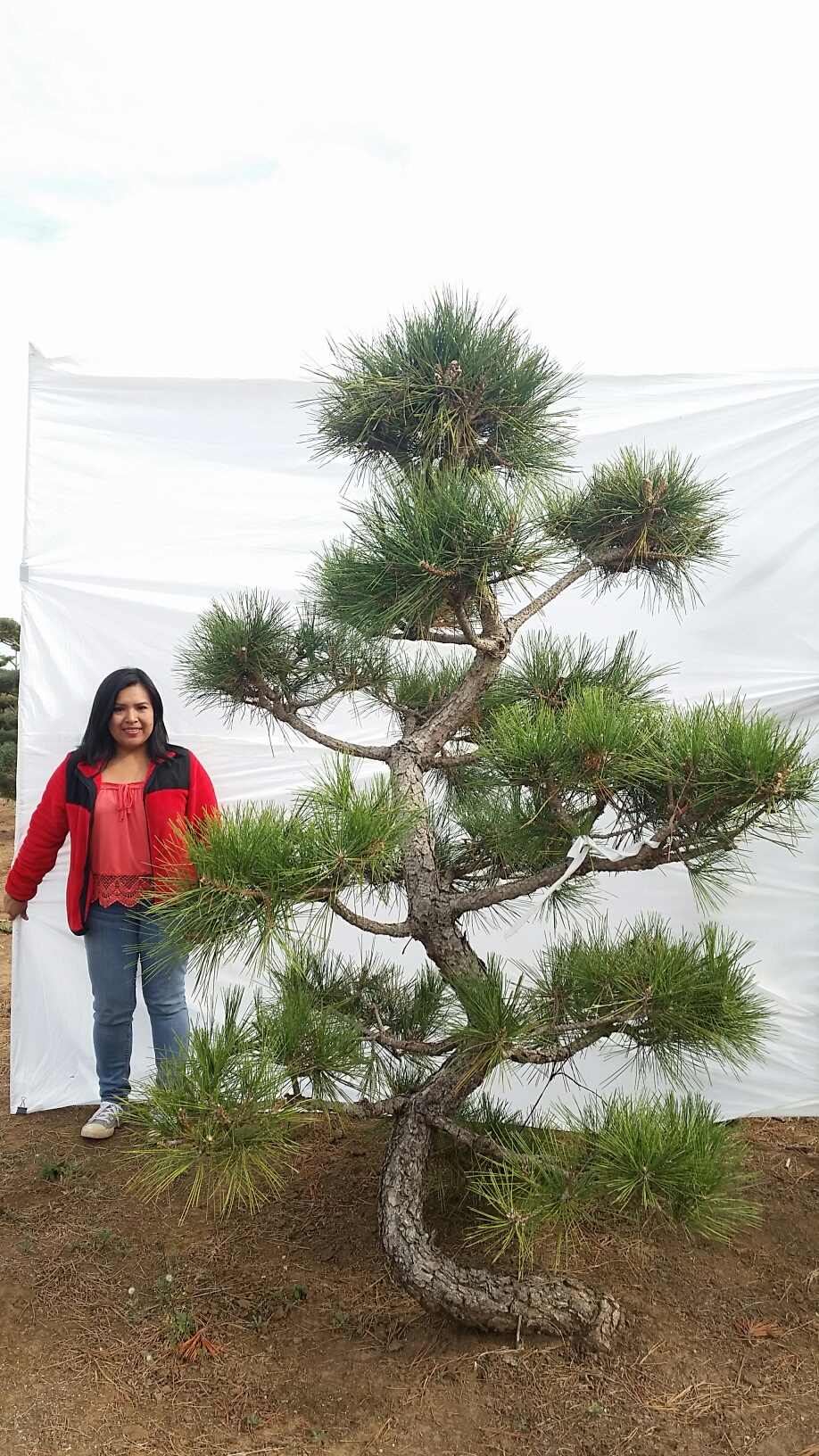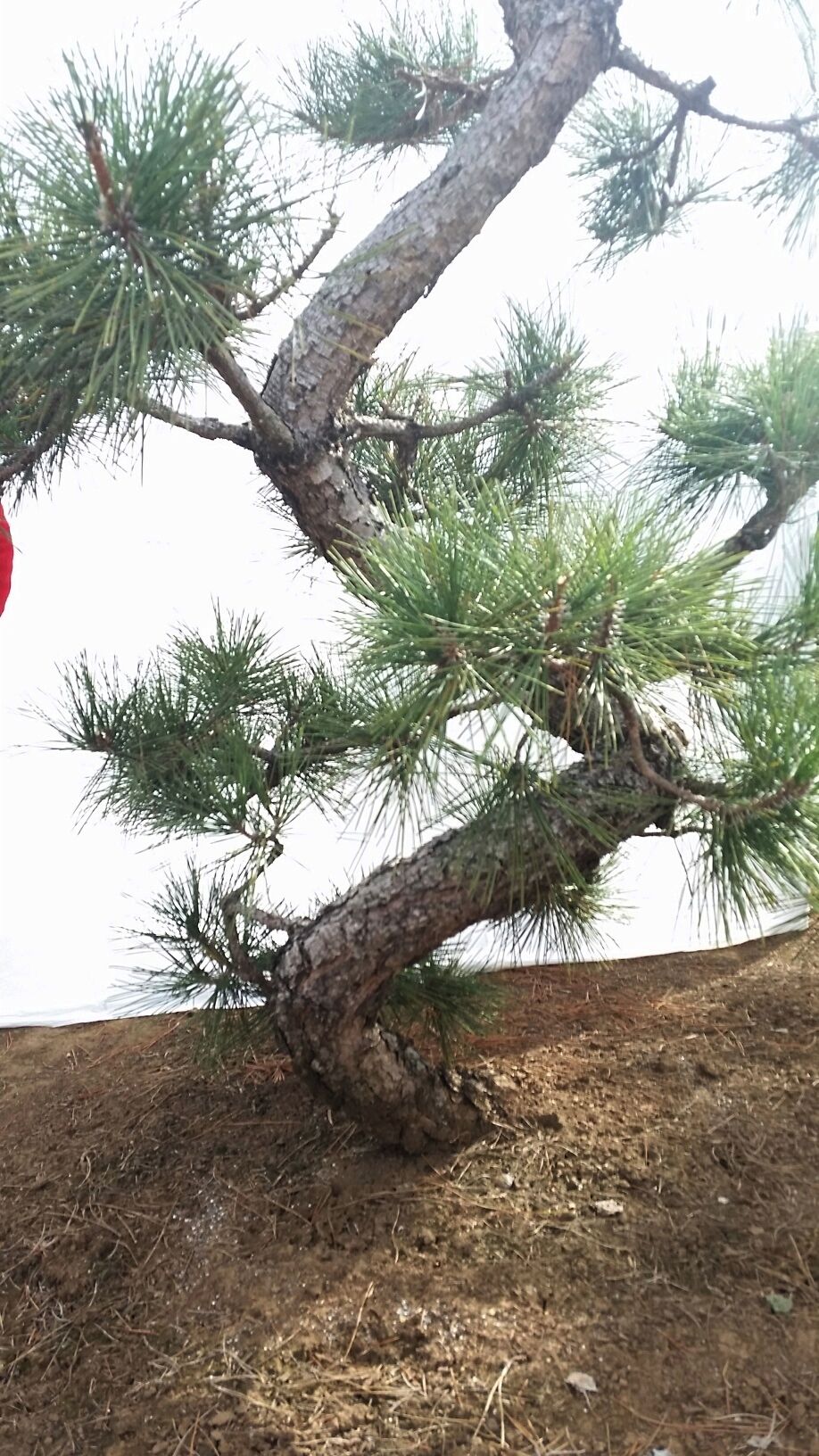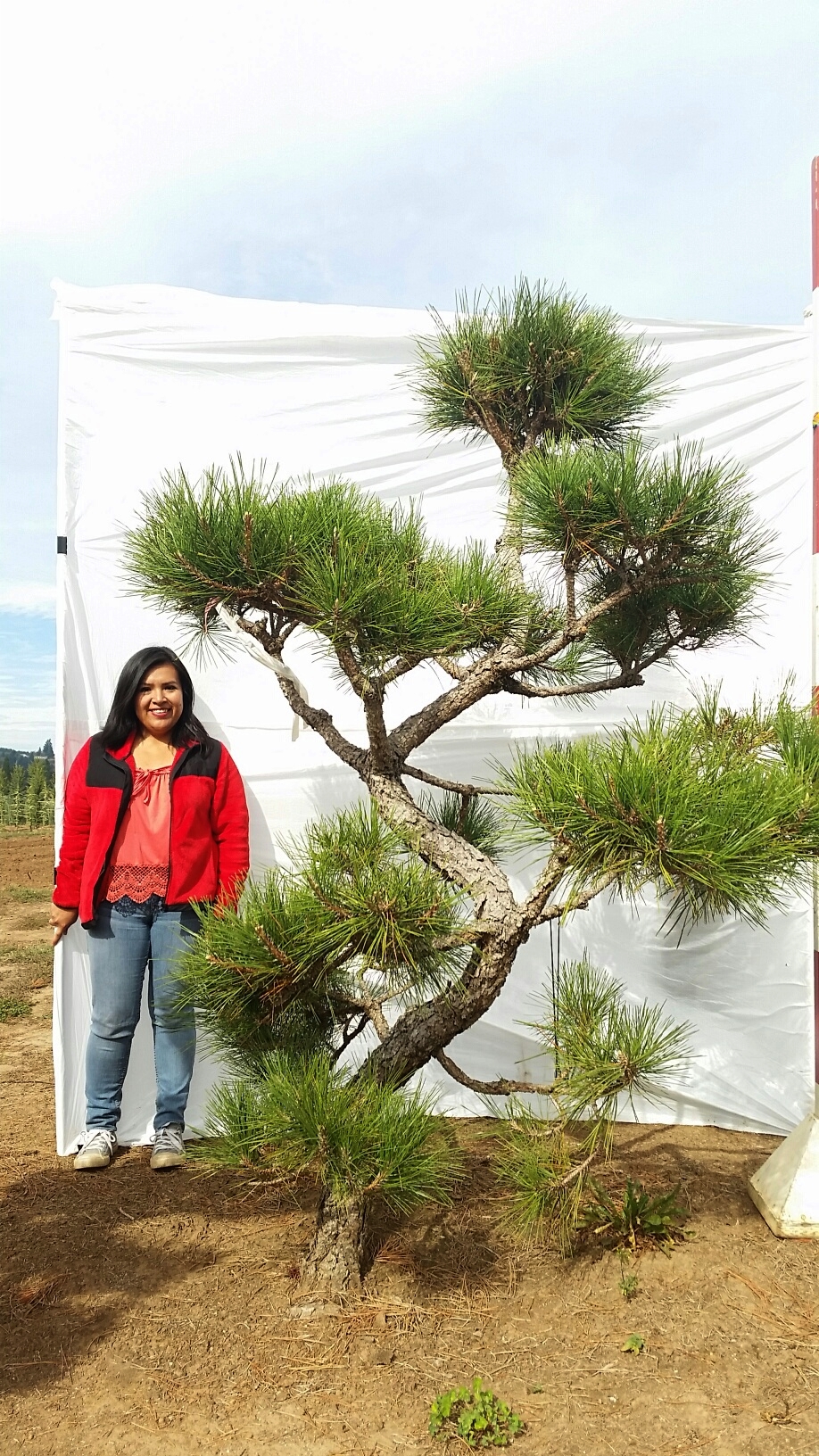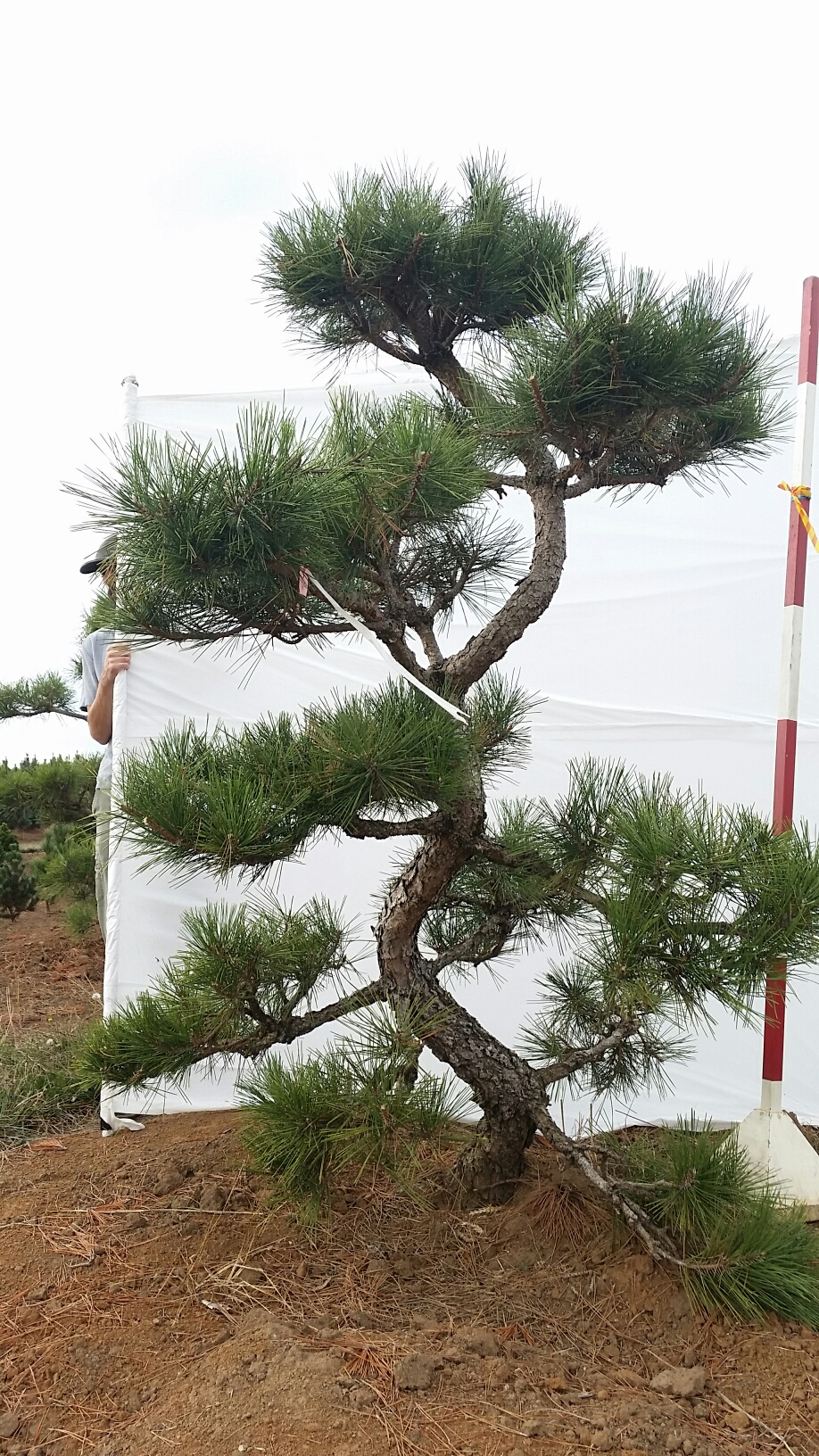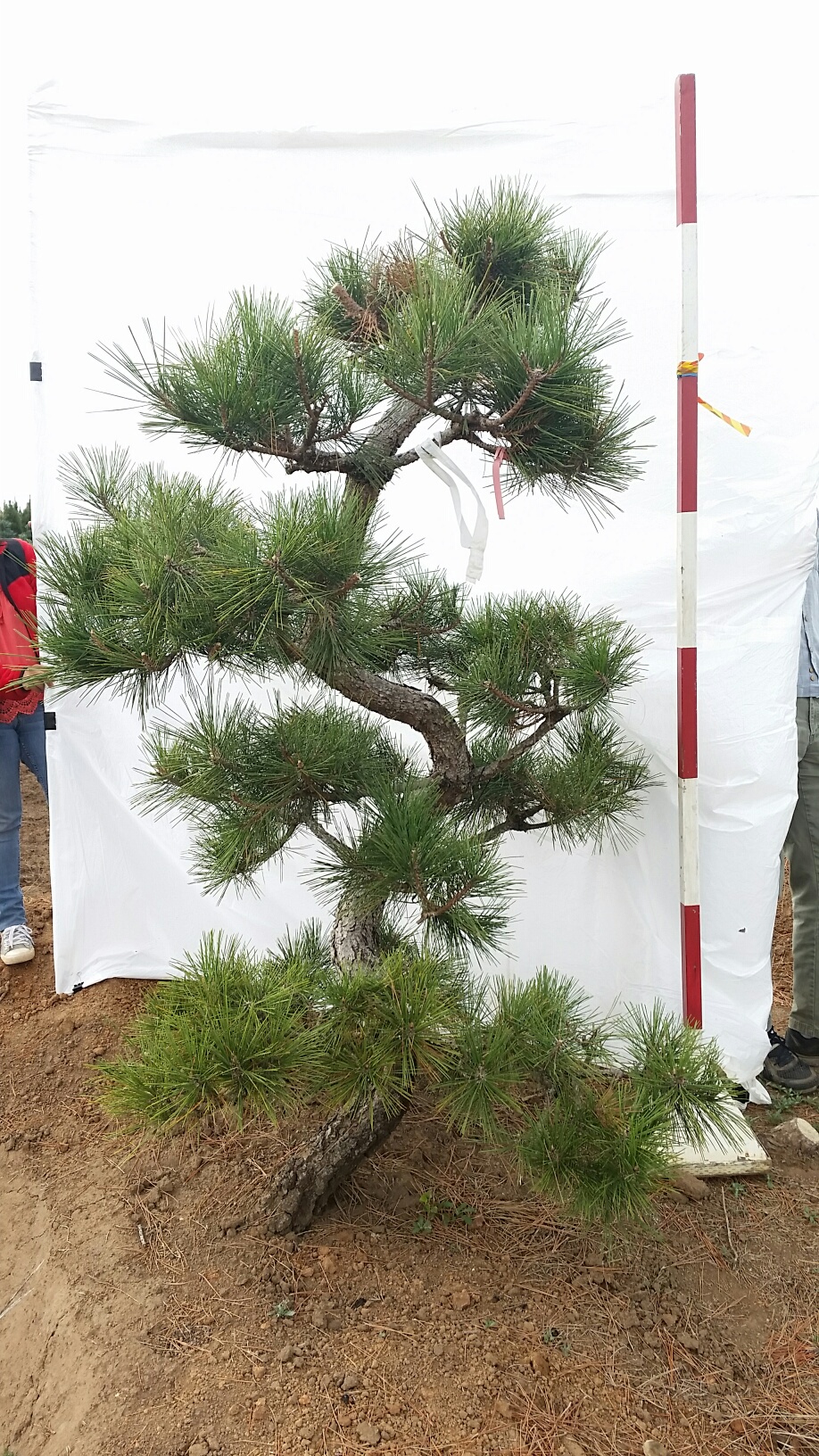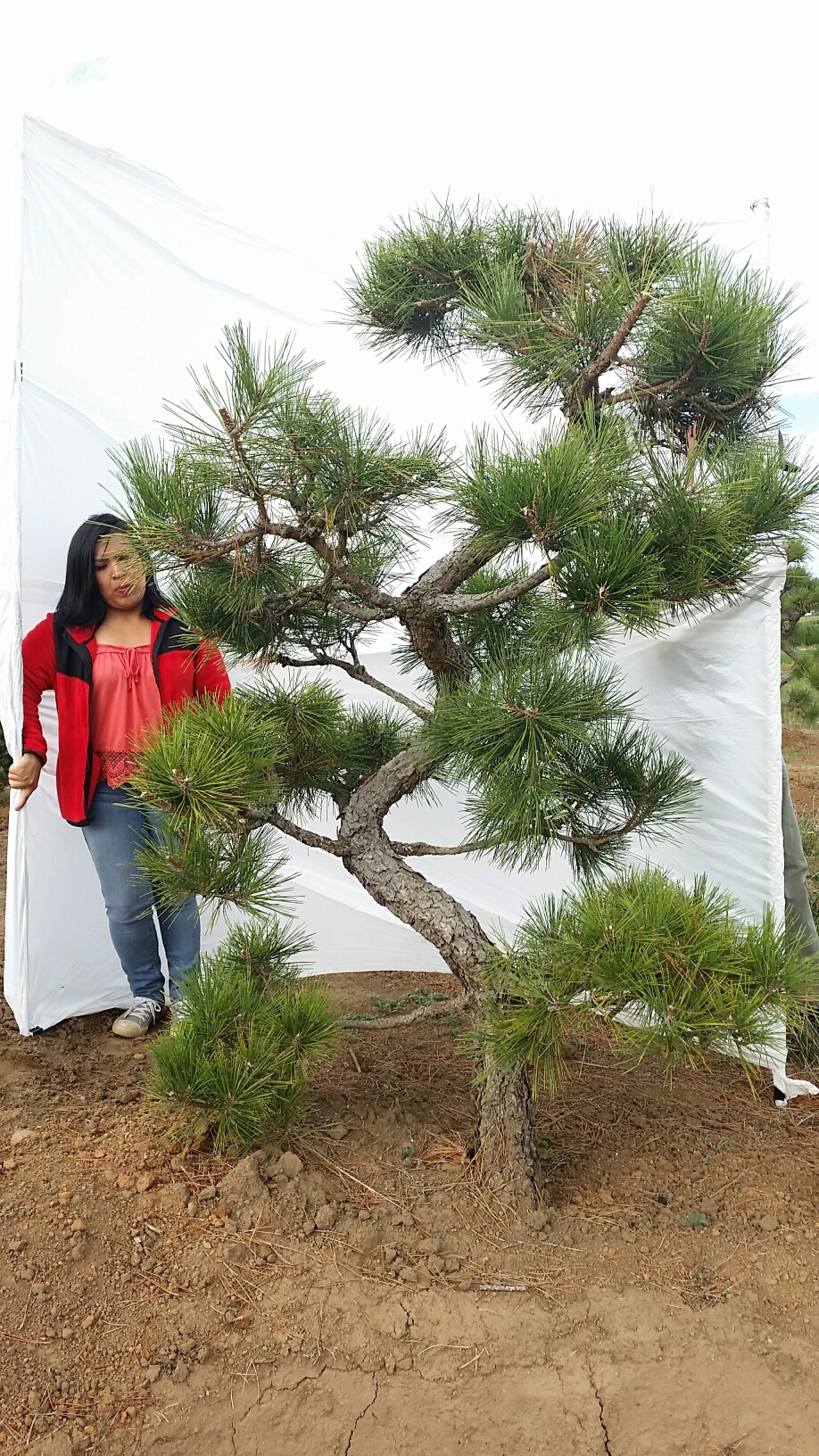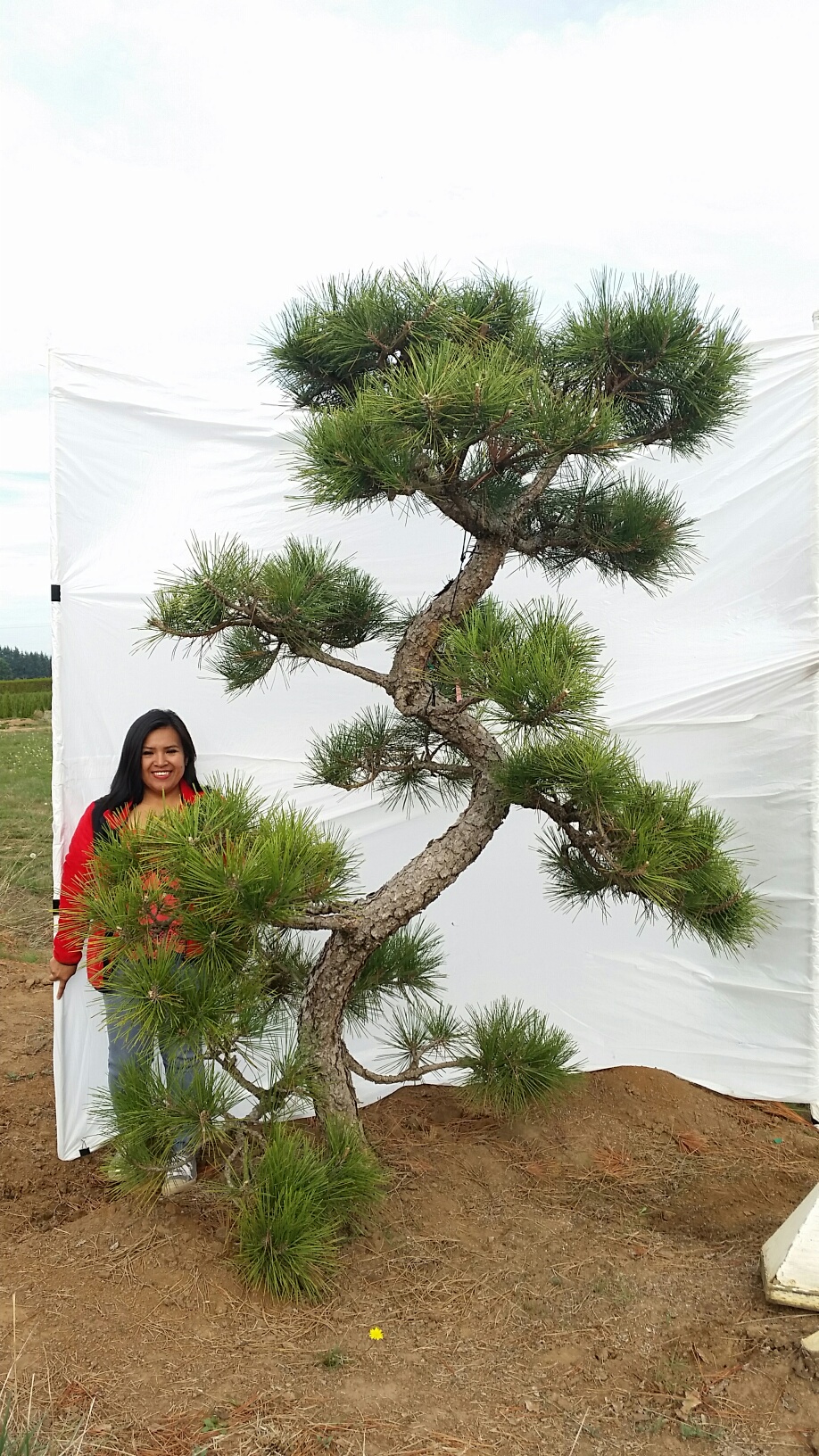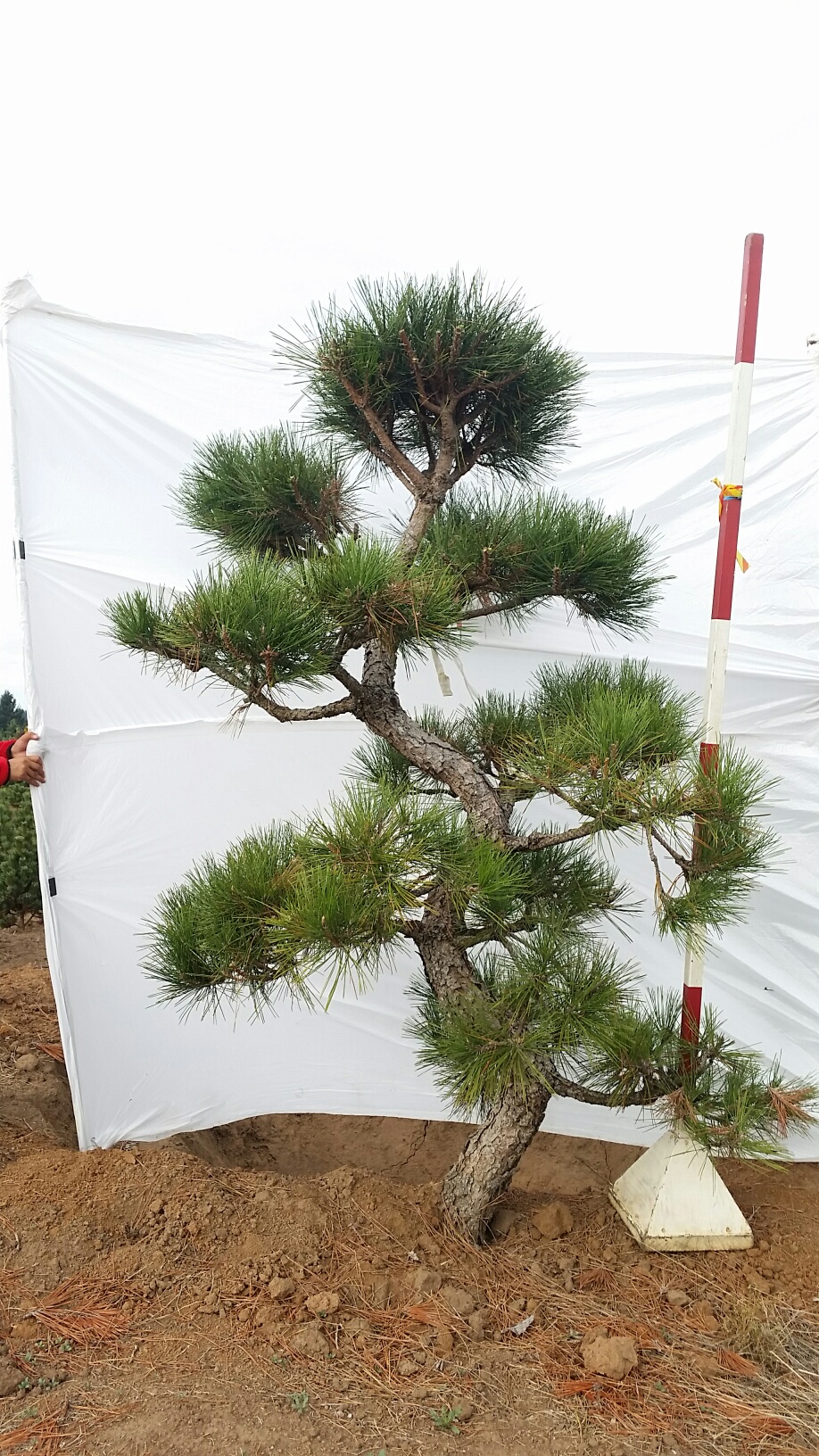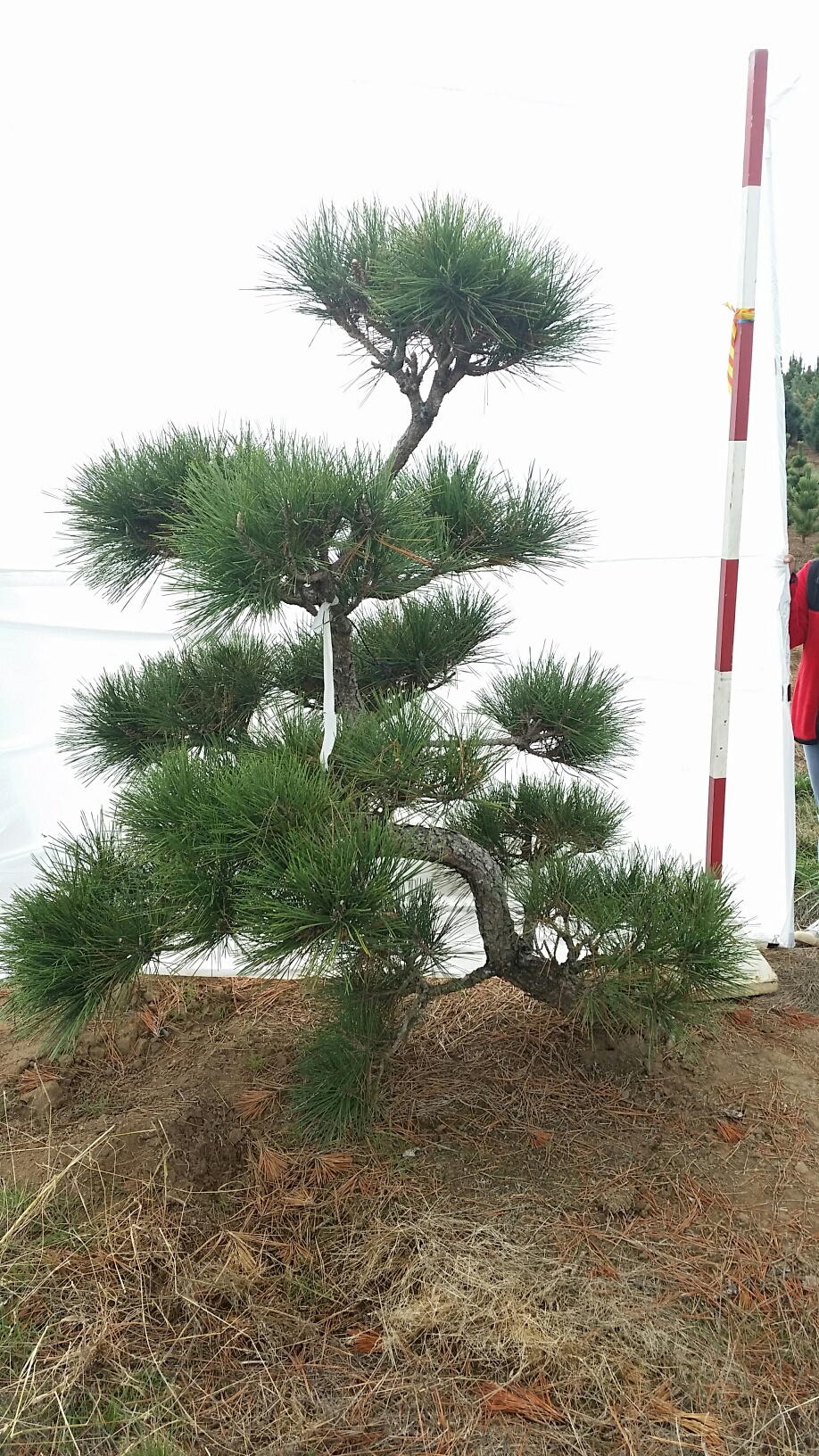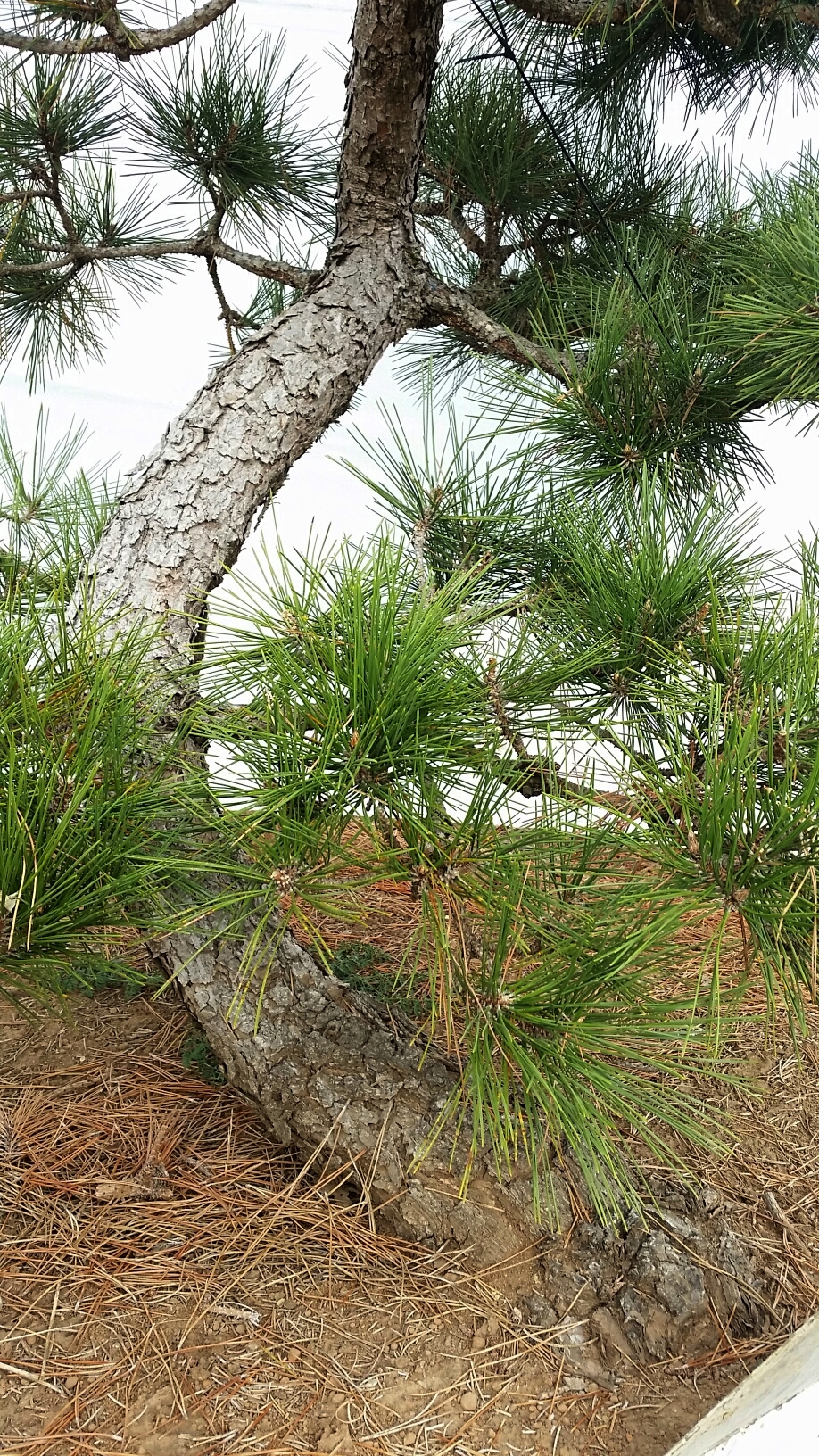We have limited numbers of varied heights, forms and shapes of premium sculptured pines, selected for their unique and superior character, that are available for spring. At the time of digging, the soil level will be brought down to expose the trunk crowns and enhancing the structure for a bonsai aesthetic .
Pinus sylvestris 'Nana Compressa'
- USDA Zone: 5 (-10 to -20 F)
Pinus sylvestris known as Scotch Pine, are known for their flaky orange/red-brown bark and their blue/green paired needles. They are native to Northern Europe and Northern Asia, they grow in moist, acidic, well drained soils in full sun. Tolerant of a variety of soil types, including poor soils, as long as the drainage is good. They prefer cool summer climates and dislike the heat and humidity of the deep South. The 'Nana Compressa' is an extremely slow growing dwarf form, 1-6 inches per year, 3-6 feet tall at 10 years. Our mature specimens have been cloud or hindu-pan pruned, creating a bold distinction for the garden.
Pinus thunbergii var. corticosa ‘Hakuho’
USDA Zone: 5 (-10 to -20 F)
The bark on 'Hakuro' develops cork like, deep fissures at an early age, giving even a young plant an aged look. This variety retains it's dark green needles through the winter. The furrowed dark brown bark is extremely showy adds significant winter interest. Like all black pines 'Hakuro' requires full sun, prefers dry to average moisture levels with very well-drained soil, and will often die in standing water. It is not particular as to soil type or PH, and is able to handle environmental salt. They are highly tolerant of urban pollution and will even thrive in inner city environments, making them a good candidate for artistic pruning to create a Asian aesthetic in the landscape or patio garden.
Pinus thunbergii 'Arakawa Sho'
- USDA Zone: 5 (-10 to -20 F)
This is a wonderfully hardy Black Pine of the corky bark variety, a tough tree native to the sea cliffs of Japan. This mature specimen, long-needled pine can be easily maintained and transformed to recreate the look of the twisted and tortured cliff dwellers, by pruning twice a year. In June (timing varies by climate) remove all the new candles that are longer than one inch, many new shorter candles will form a whorl of branches. In November, reducing the whorl will reduce the 3 inch needles to 2 inch, this allows you complete control of the size and shape of the tree.

